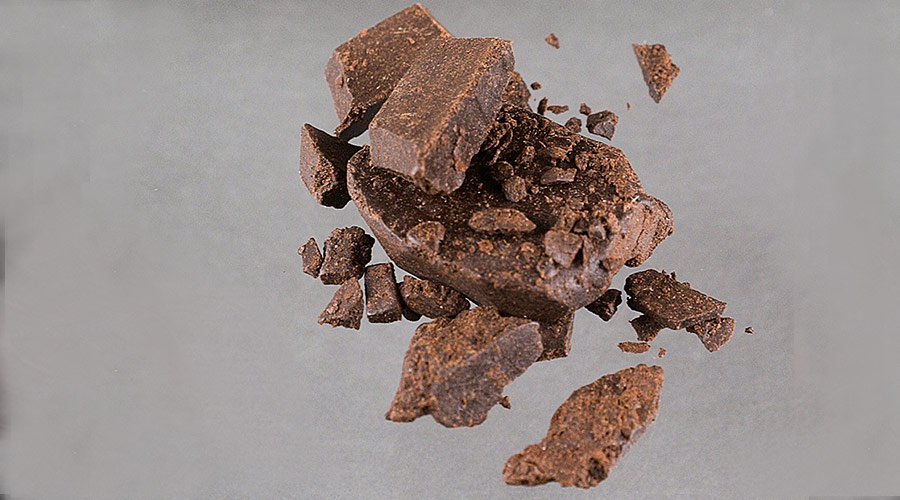In today’s rapidly growing cannabis market, it can be hard to imagine a time when cannabis concentrates, or dabs, weren’t widely available. The modern-day market includes wax, shatter, crumble, live resin, sauce and plenty more concentrate-based products for dabbing. Needless to say, dabs come in a variety of colors and consistencies. But how did this highly potent form of cannabis come to be?
The history of hashish
The history of dabs begins thousands of years ago in the form of hashish, which is an extracted and compressed form of cannabis trichomes. Trichomes are the resin glands on cannabis or hemp flower buds, stems, and leaves. They contain the full-spectrum of cannabinoids, terpenes, flavonoids, and other therapeutic compounds. Ancient cultures in India, Persia, and China would use hashish for medicinal and religious purposes.

The origin of cannabis concentrates
Hashish made its way to Europe during the 18th century and was quickly used by pharmacists to make medicinal compounds. Hashish-based medicines quickly became popular throughout Europe and the U.S. during the late 18th century. In fact, cannabis-based tinctures lined the shelves of local apothecaries in the U.S. until prohibition. But, cannabis concentrates wouldn’t see a rise in popularity until the 1940s.
Confirmed and declassified World War II documents described a THC acetate “serum” used by the U.S. Office of Strategic Services for their biochemical interrogation program. Under the leadership of George White, prisoners and unsuspecting individuals were dosed with hash-oil-laced tobacco cigarettes. The experimental and harsh practice went on throughout the ‘50s and ‘60s under the infamous MK Ultra program.
Today’s modern butane hash oil (BHO) didn’t make an appearance in the U.S. market until the 1970s, when The Brotherhood of Eternal Love, a drug distribution organization, brought over a steady supply of BHO from Kabul, Afghanistan. The supply of BHO was shortlived when the group stopped operations after an explosion at their production headquarters. Hash oil during this time contained anywhere between 10 to 30 percent THC.
As the world began to learn more about this new cannabis concentrate, publications started to detail its existence and manufacturing methods. In D. Gold’s 1973 book Cannabis Alchemy: The Art of Modern Hashmaking, Gold provides readers with an overview of honey oil preparation using pure alcohol and activated charcoal. In Michael Starks’ 1977 book, Marijuana Chemistry: Genetics Processing and Potency, Starks detailed hash oil preparation using various solvents.
Closed-loop extraction
It wasn’t until 1999, when popular online psychoactive library Erowid published “Hash Honey Oil Technique” describing a modern-day open-blasting extraction method. Many amateur BHO labs have exploded due to the highly-flammable butane used, but amateur users continue to use this method. Open-blasting hydrocarbons such as propane and butane led to the more refined and advanced closed-loop extraction system where the solvent is contained and recycled.
In 2005, a Cannabis Culture article titled Beautiful Budder showcased the proprietary “budder” oil made by a Canadian man known as Budderking. In 2010, butane hash oil products made their way to the High Times Cannabis Cup. Ever since then, producers, retailers and consumers have been flocking to potent and flavorful dabs of many types.
Dabbing in the 21st Century
As more states began instituting medical and recreational cannabis laws, manufacturers began experimenting with extraction processes to produce a variety of concentrate types including budder, wax and sap. Manufacturers also varied in solvent types used including ethanol, butane, propane and carbon dioxide (CO2).
Pretty soon, manufacturers discovered that blending certain gases such as butane and propane could improve the extraction process by keeping pressures low and increasing output. The resulting concentrate contains more of the plant’s cannabinoids and terpenes for a more flavorful and potent experience. Other innovations have expanded solventless extraction methods to include the rosin technique, which extracts concentrates using pressure alone.
Today, manufacturers are exploring new techniques in cannabis extraction such as color remediation to improve the look and color of an extract. A filtering column full of various filtration substances can remove impurities from the extract and produce an amber-hued concentrate that has an extraordinary bag appeal.
The history of dabs reflects the ingenuity of cannabis enthusiasts worldwide. Ancient cultures instinctively knew how to harness the power of cannabis and hemp through a concentrated resin. If you want to pay homage to the forefathers of dabs, take a huge dab and share your concentrates with friends.
—
What surprised you most about the history of cannabis concentrates? Let us know in the comments section below.


This was first i knew of mixing gases in the Closed loop extraction process.